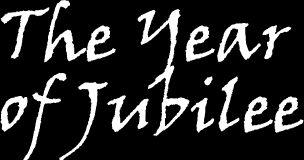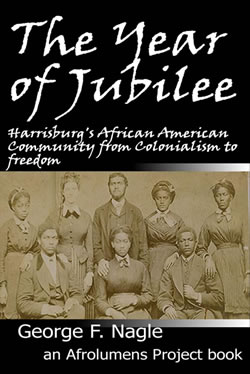
a book about Harrisburg...
by George F. Nagle
Study Areas:
Chapter
Eight
Backlash, Violence and Fear: The Violent Decade (continued)
1851: September 11
Unusually hot weather had settled in on central Pennsylvania during the middle of September, marking a sweaty and uncomfortable end to the summer of 1851. In Harrisburg, attorney Charles Coatesworth Rawn labeled it sultry, complaining in the pages of his journal that even the nights were “also very warm,” and he underscored the word “very” as if to chastise the oppressive heat wave for its unappreciated zeal. Rawn had been keeping quite busy this summer in his legal practice, and he no doubt resented the way his house on Market Square tenaciously hoarded the day’s heat, thus robbing him of a restful night’s slumber. He was not alone. Central Pennsylvania is notorious for its lack of cooling evening breezes during the hottest summer months, the effect of which is especially noticeable in the towns, where neat rows of stately brick townhouses refuse to cool down before two o’clock in the morning.
Attorney Rawn went to bed about ten o’clock on the night of September tenth, facing the prospect of another “very warm” night, having noted in his journal that the day was “as hot if not hotter weather than we have had this summer.”38 By the time that he and his fellow Harrisburgers awoke to their breakfasts the next morning, the entire complexion of the anti-slavery movement was being changed by events that were occurring at a remote farmhouse about fifty-five miles to the southeast.
Unlike Harrisburg, southern Lancaster County was welcoming a cool front that was creeping slowly north from the southern border. This same night saw much cooler temperatures that shrouded much of the lush farmland in a light mist by the early morning hours and gave residents their first comfortable night’s sleep in weeks. Not everyone in this area was asleep, though. Wide-awake crews manned the steam trains that cut through the slumbering towns on late night and early morning scheduled runs. The Philadelphia and Columbia Railroad, as part of the state-owned Main Line transportation system, never slept, and on this night it passed as usual through the county, stopping briefly at small town stations to disgorge sleepy passengers and exchange mail and freight. The railroad climbed from sea level at Philadelphia to its highest point, six hundred feet above sea level, at Gap, Pennsylvania, before falling somewhat in elevation to service the interior of the Keystone State.
On this particular night, the train crew noted a little extra late night activity at this station. At one thirty a.m., a large party of white men got off the cars at the railroad station in Gap, Pennsylvania, and, after the train pulled out again, they began walking south along the tracks toward the previous station on the line, a distance of a little more than two miles, at the town of Christiana. Just before reaching that small Lancaster County town, they met a shadowy man on the tracks by the name of William Padgett, who had been waiting for them.
Even though they were meeting on a quiet stretch of railroad bed in the middle of the night, Padgett, an itinerant clock repairman originally from Maryland but now working in southern Lancaster County, had taken pains to cover his face from anyone who might see and recognize him. One person in the party recognized Padgett right away, though. Edward Gorsuch, a fifty-six-year-old farmer from Glencoe, Maryland, carried a letter in his pocket from Padgett, written barely two weeks before, which began “Respected friend, I have the required information of four men that is within two miles of each other,” and imploring the Maryland farmer to bring twelve men, and to come “as soon as you possibly can.”
Gorsuch heeded the words of his Lancaster County contact and went to Philadelphia where he swore out a charge against four men before Federal Commissioner Edward D. Ingraham, who promptly issued the required warrants that would enable the Maryland slaveholder to reclaim the four men, his property, under authority of the Fugitive Slave Act. Ingraham also dispatched Deputy Marshal Henry H. Kline and two additional Philadelphia lawmen to assist Gorsuch in the capture.
The four men he wanted, Noah Buley, Nelson Ford, Joshua Hammond, and George Hammond, had been slaves on his Glencoe estate, Retreat Farm, and they had run away on November 6, 1849 when they feared being accused of stealing five bushels of wheat that were missing from the farm granary.39 Gorsuch had been hunting for them ever since, and now it appeared that they were close at hand, hiding out in two local farmhouses outside of the village of Christiana, Pennsylvania. At the urging of William Padgett, Gorsuch had come to Pennsylvania to capture them and take them back to Maryland.
Padgett led the small group away from the railroad tracks at a grade crossing and into the woods to the east of town. The group was smaller than the dozen men the spy had urged his friend to bring, in his August twenty-eighth letter. Edward Gorsuch had brought only a few family members, including his son Dickinson and son-in-law Alexander Morrison, and three neighbors to help.
Marshal Henry Kline was the lone lawman in the group, having lost the support of the two men originally assigned by Judge Ingraham to help him. Kline’s deputies believed the group was walking into a bad situation and would go no further than the nearby town of Parkesburg. They returned to Philadelphia on a return train before the slave hunting party departed for Gap.
Padgett apparently was not happy that the group was only half the size he had originally proposed. His original plan had followed the strategy for slave catching that had proved so successful in the past: arrive quietly and swiftly, and with a force large enough to subdue the fugitives quickly. He had directed Gorsuch to bring twelve men “so that they can divide and take them all within half an hour.” But the plan was already compromised. Padgett had wanted the slave catchers to arrive in Christiana on September second or third, and now it was the early morning of the eleventh.
Worse still, there were indications that the neighborhood had been warned about their approach, so even the element of surprise was lost. Despite these problems, Padgett led the group through the woods to a small road called Long Lane. This was the road that led toward the tenant farmhouse of William Parker, where two of Gorsuch’s slaves, Noah Buley and Nelson Ford, were believed to be staying.40
It was at least an before dawn when Padgett stopped the group, gave them directions to find the small private farm lane that led from Long Lane to William Parkers’ house, and then took his reward money and his leave. As a spy whose role it was to ferret out and report on fugitive slaves in the area, he had done his job. He wanted no part of the actual capture, and in fact did not want to be anywhere in the area when this group confronted William Parker to demand the return of Mr. Gorsuch’s slaves.
He knew that the man whose farm they were about to invade was not a person easily cowed by authority or a show of force. Those tactics had usually been successful against individuals and small groups of African American residents in the border counties of Pennsylvania, especially in the wake of the 1850 Fugitive Slave Law. Surprised fugitive slaves, aroused by a raid in the middle of the night, were expected to put up at least a weak struggle, but if he or she were properly overpowered by enough strong accomplices who were backed up by a gun-wielding lawman, few bystanders were willing to risk arrest or serious injury by rushing to their defense. That, apparently, was the experience of Marshal Kline and Edward Gorsuch, and it was the expectation that formed their plan of action that night.
If Padgett shared his fears that things might not go as planned, Kline and Gorsuch did not heed him. With no more business to conduct, their guide slipped silently into the darkness toward the safety of his home while the slave hunters turned to continue walking along Long Lane, and then turned east on the small farm road that led to the front door of William Parker.
Notes
38. Entries dated 4 September 1851 to 10 September 1851, “Rawn Journals” (accessed 2 October 2009).
39. Rettew, Treason at Christiana, 20, 25-28, 33.
40. Ibid.
Caution: Copyrighted material. Published September 2010.
© 2010 George F. Nagle
This is the first in a series of books from the Afrolumens Project. Drawing on a large number of sources, and making good use of the treasure trove of information on the pages of the Afrolumens Project, this is the first truly comprehensive history of Harrisburg's African American community.

